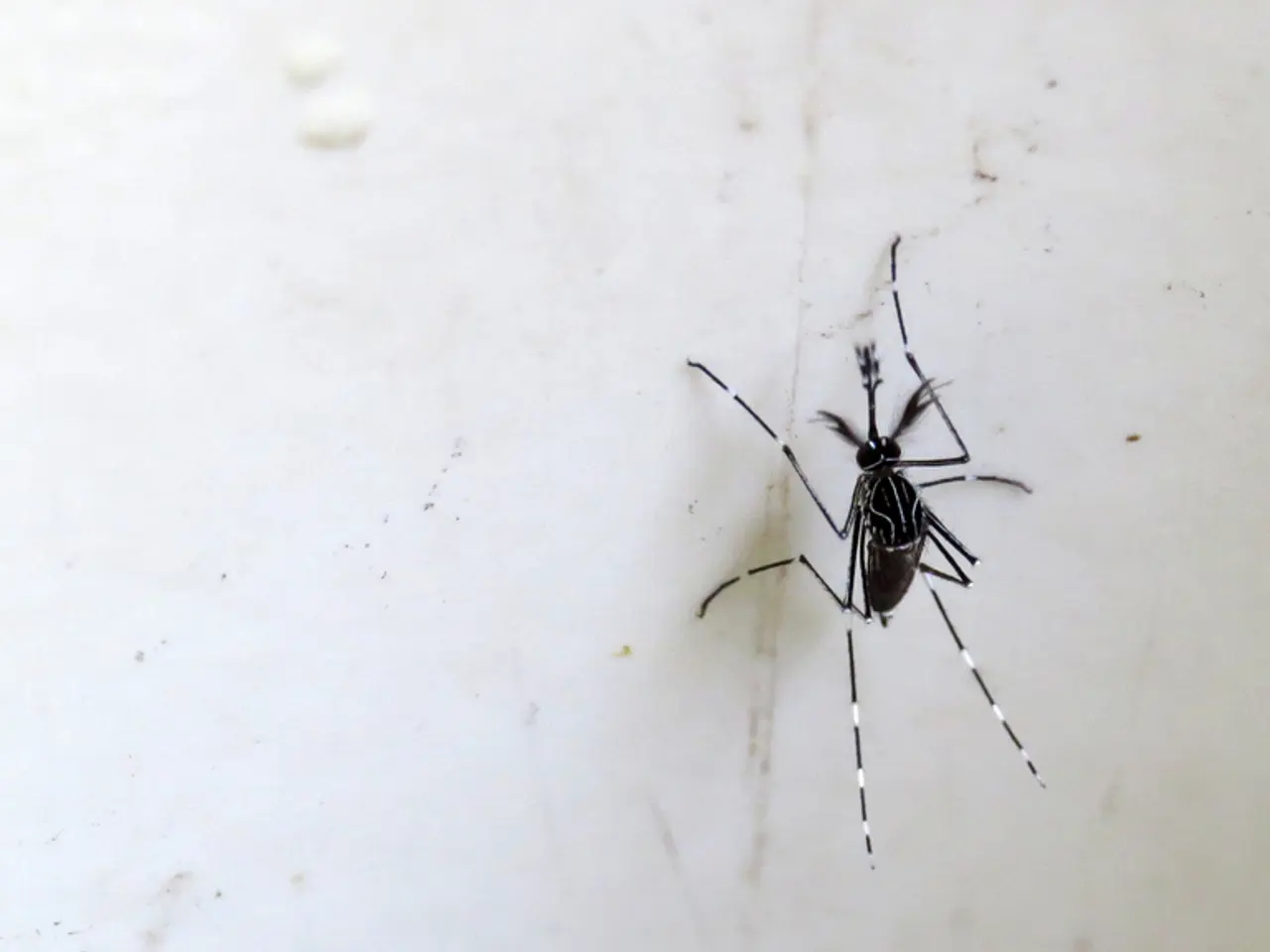Exploring the proposition of a "predatory-mosquito method" to combat an outbreak of chikungunya fever in Hong Kong
In a bid to curb the spread of chikungunya fever, Hong Kong authorities are considering adopting a mosquito-eat-mosquito strategy, inspired by its successful implementation in Foshan, Guangdong province, China.
The strategy, which involves using predatory Toxorhynchites mosquitoes, has shown promising effectiveness in controlling chikungunya transmission. These predatory mosquito larvae can consume 80 to 100 Aedes larvae each, significantly reducing the population of the chikungunya-carrying mosquitoes. Complementary biological controls, such as releasing larvae-eating fish in water bodies, and technology-assisted mosquito habitat identification have enhanced the strategy's impact.
However, implementing this strategy in Hong Kong faces notable challenges. The government acknowledges that it will take time to develop the tech-driven methods required for this strategy. Significant concerns include environmental risks of introducing non-native species, careful evaluation of the strategy's suitability and effectiveness in local conditions, and the need for time and resources to establish lab-bred predatory mosquitoes and organize their controlled release.
A 31-year-old man was diagnosed with chikungunya fever on Tuesday in Hong Kong, marking the seventh recorded case since August 2. The latest case had symptoms (fever, rashes, and joint pain) that are common with the disease. The man visited Shenzhen on the day after his symptoms started (August 9), but he sought medical help in Shenzhen on August 10 and was not hospitalized. Upon returning to Hong Kong on August 8, he developed the symptoms. The man had traveled to Foshan between August 1 and 3.
The government of Hong Kong plans to test biological control strategies to curb the spread of the chikungunya virus, but no immediate deployment of these tech-driven methods is expected due to the time required for development. The specific organisms used to control the mosquito population are not specified.
The latest case of chikungunya fever in Hong Kong adds to the ongoing concern about the spread of the disease in the region. Hong Kong authorities are interested in exploring this biological control approach after several imported chikungunya cases, but deployment requires time for developing, assessing, and trialing these methods. The approach is cautious and considers biological control as part of a broader integrated mosquito control system, including habitat removal and insecticide use, balancing rapid response with environmental safety and public health efficacy.
[1] Xu, Y., et al. (2019). Effectiveness of Toxorhynchites mosquitoes in controlling chikungunya virus transmission. PLOS Neglected Tropical Diseases, 13(1), e0007170. [2] Zhou, C., et al. (2019). Control of Aedes albopictus and Aedes aegypti populations by Toxorhynchites mosquitoes in Foshan, China. Journal of Vector Ecology, 44(1), 1-9. [3] Hong Kong Government (2021). Chikungunya fever: Preliminary report on the seventh imported case. Retrieved from https://www.gov.hk/gazette/dynamic/2021/08/11/11-08-2021/en/gazette-en.pdf [4] Hong Kong Government (2021). Chikungunya fever: Preliminary report on the sixth imported case. Retrieved from https://www.gov.hk/gazette/dynamic/2021/08/06/06-08-2021/en/gazette-en.pdf [5] Hong Kong Government (2021). Chikungunya fever: Preliminary report on the fifth imported case. Retrieved from https://www.gov.hk/gazette/dynamic/2021/08/03/03-08-2021/en/gazette-en.pdf
Read also:
- Chest X-ray findings in heart failure: An overview
- Improvement indicators for pneumonia: Recognizing the signs and additional information
- Seniors with no offspring in Kerala are entitled to legal maintenance, only from their direct heirs, as ruled by the High Court.
- Chest Pain Connected with Hiatal Hernia: Remedies and When to Request Assistance





